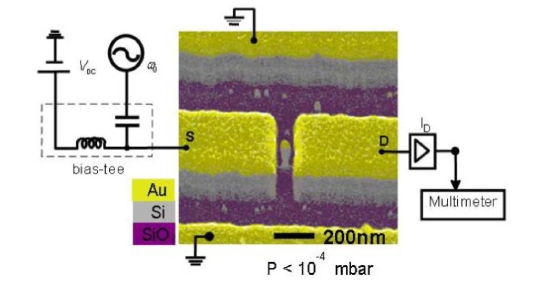One of my engagements in a slightly frantic period last week was to go to a UK-Korea meeting on collaboration in nanotechnology. This had some talks which gave a valuable insight into how the future of nanotechnology is seen in Korea. It’s clearly seen as central to their program of science and technology; according to some slightly out-of-date figures I have to hand about government spending on nanotechnology, Korea ranks 5th, after the USA, Japan, Germany and France, and somewhat ahead of the UK. Dr Hanjo Lim, of the Korea Science and Engineering Foundation, gave a particularly useful overview.
He starts out by identifying the different ways in which going small helps. Nanotechnology exploits a confluence of 3 types of benefits – nanomaterials exploit surface matter, in which benefits arise from their high surface to volume ratio, with most obvious benefits from catalysis. They exploit quantum matter, size dependent quantum effects that are so important for band gap engineering and making quantum dots. And they can exploit soft matter, which is so important for the bio-nano interface. As far as Korea is concerned, as a small country with a well-developed industrial base, he sees four important areas. Applications in information and communication technology will obviously directly impact the strong position Korea has in the semiconductor industry and the display industry, as well as having an impact on automobiles. Robots and ubiquitous devices play to Korea’s general comparative advantage in manufacturing, but applications in Nano foods and medical science are relatively weak in Korea at the moment. Finally, the environmentally important applications in Fuel/solar cells, air and water treatments will be of growing importance in Korea, as everywhere else.
Korea ranks 4th or 5th in the world in terms of nano-patents; the plan is, up to 2010, to expand existing strength in nanotechnology and industrialise this by developing technology specific to applications. Beyond that the emphasis will be on systems level integration and commercialisation of those developments. Clearly, in electronics we are already in the nano- era. Korea has a dominant position in flash memory, where Hwang’s law – that memory density doubles every year – represents a more aggressive scaling than Moore’s law. To maintain this will require perhaps carbon nanotubes or silicon nanowires. Lim finds nanotubes very attractive but given the need for control of chirality and position his prediction is that this is still more than 10 years until commercialisation. An area that he thinks will grow in importance is the integration of optical interconnects in electronics. This, in his view, will be driven by the speed and heat issues in CPU that arise from metal interconnects – he reminds us that a typical CPU has 10 km of electrical wire, so it’s no wonder that heat generation is a big problem, and Google’s data centres come equipped with 5 story cooling towers. Nanophotonics will enable integration of photonic components within silicon multi-chip CPUs – but the problem that silicon is not good for lasers will have to be overcome. Either lasers off the chip will have to be used, or silicon laser diodes developed. His prognosis is, recognising that we have box to box optical interconnects now, and board to board interconnects are coming, that we will have chip to chip intercoonnects on the 1 – 10 cm scale by 2010, with intrachip connects by 2010-2015.
Anyone interested in more general questions of the way the Korean innovation system is developing will find much to interest them in a recent Demos pamphlet: Korea: Mass innovation comes of age. Meanwhile, I’ll be soon reporting on nanotechnology in another part of Asia; I’m writing this from Bangalore/Bengalooru in India, where I will be talking tomorrow at Bangalore Nano 2007.
